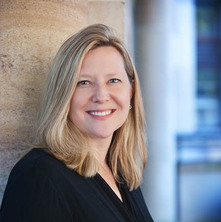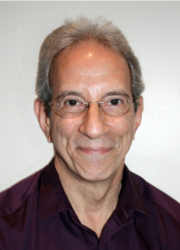Stories from the Interview Booth showcases some of the most interesting tales presented at the #ASC14 Conference Interview Booth. Thank you to Michelle Wheeler for sharing these stories!
If you were at the ASC14 conference dinner, you’ll know Scottish palaeontologist Professor Flint as a man of brilliant lyrics and tunes you can’t get out of your head.
You’ll know he’s a little eccentric, passionate about the Australian story and has the kind of energy that gets hundreds of science communicators on their feet doing dinosaur actions.
But you might not realise Professor Flint’s creator Michael Mills has been on real fossil digs, spent time hanging out with one of the inspirations for Jurassic Park’s Alan Grant character and calls some of Australia’s leading palaeontologists friends.
Oh, and he’s not actually Scottish.
Mills, who is the creative director of Heaps Good Productions, said the character of Professor Flint came about after he read Tim Flannery’s book The Future Eaters.
He was Australian right up until the final dress rehearsal when Mills walked past a puppet wearing a Tam o’ Shanter and realised that if Professor Flint was Scottish the song “rocks and bones” became “rrrocks ‘n’ boones”.
“All of sudden it became funnier,” Mills said.
“It also allowed Flint to be an outsider saying how cool this stuff is because at times in Australia we’ve got this cultural cringe where we’re a bit shy about raving about some of our stuff.”
If making Professor Flint Scottish was genius, what happened next was just brilliant good luck.
The SA Museum decided to host a palaeontology week, bringing Australia’s best palaeontologists to Mills’ home town of Adelaide just as he had created the character.
Professor Flint became an important part of the event and Mills got to hang out with some of the leading palaeontologists from Australia and around the world.
“For me, part of the buzz was the privilege that you have of sitting in a room at dinner at night with guys like (Jurassic Park inspiration) Phil Currie, (Flinders University Professor) Rod Wells and (Queensland Museum curator) Scott Hocknull and all of the Australian palaeos that have discovered all the stuff because in the end it’s their stories that I’m telling,” he said.
“And they impressed upon me the importance of getting the content right.”
Mills has since gone on fossil digs at Emu Bay, been shown museum collections closed to the public and sends his lyrics to palaeontologists to check he has them scientifically correct.
In the process he has amassed a depth of knowledge that leads many to mistake his alter ego for a real person.
“We constantly have people seeing Flint as real and that’s because I’ve learnt enough about the palaeo to be able to talk the stuff,” Mills said.
They had to run, run, run, they had to hit top speed,
They had to run, run, there was a dinosaur stampede.


